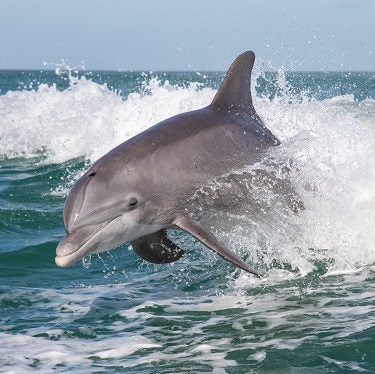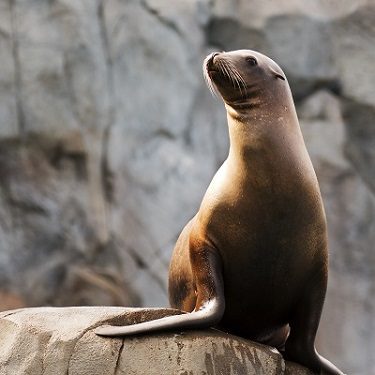Marine Life Encyclopedia
Seabirds
Jackass Penguin
Spheniscus demersus
Distribution
Cold temperate latitudes of southern Africa (both Atlantic and Indian coasts)
eCOSYSTEM/HABITAT
Nest on beaches and rocky shores; feed along the coast
FEEDING HABITS
Foraging predator
TAXONOMY
Order Sphenisciformes (penguins), Family Spheniscidae (penguins)
The jackass penguin is closely related to the temperate penguins of South America (the Humboldt penguin, the Galapagos penguin, and the Magellanic Penguin), and these four species are together known as the banded penguins.
Jackass penguins lay clutches of two eggs in burrows that they dig out of the thick layers of guano (seabird droppings) that cover the coastline throughout their range. While one parent feeds, the other parent guards the nest. Incubation takes longer than one month. Jackass penguins form strong pair bonds and remain with the same partner for their entire lives. They are foraging predators that primarily eat small fishes, and they typically hunt within a few hundred kilometers of their nesting sites. They are prey for the large marine predators of the area, namely sharks, fur seals, and killer whales. Like all penguins, jackass penguins provide significant parental care for both the eggs and the chicks.
Jackass penguin populations are decreasing, and scientists consider the species to be endangered (highly vulnerable to extinction). Experts believe that much of the decline is a result of decreasing amounts of their favorite fish prey, a result of overfishing. Damage to nests resulting from guano mining, tourism, and direct egg collection threatens this species’ ability to recover. Finally, oil spills are particularly dangerous for jackass penguins and other seabirds. Like all birds, these penguins must breathe air and if they surface in an oil slick, they are very likely to die. Each of these threats is a major concern for jackass penguin populations. When they are all combined, the species is placed at risk of extinction. Fortunately, this species is afforded some or complete legal protection throughout its range. Unfortunately, those efforts rarely extend to human activities that incidentally threaten individual birds (like oil spills, overfishing, etc.). Continuing scientific research and conservation efforts are both vital to ensure that decreasing population trends are reversed.
Engage Youth with Sailors for the Sea
Oceana joined forces with Sailors for the Sea, an ocean conservation organization dedicated to educating and engaging the world’s boating community. Sailors for the Sea developed the KELP (Kids Environmental Lesson Plans) program to create the next generation of ocean stewards. Click here or below to download hands-on marine science activities for kids.
Additional Resources:
Get Involved

Donate Today
SUPPORT OUR WORK TO PROTECT THE OCEANS BY GIVING TODAY
With the support of more than 1 million activists like you, we have already protected nearly 4 million square miles of ocean.

TAKE ACTION NOW
Support policy change for the oceans
Decision-makers need to hear from ocean lovers like you. Make your voice heard!

VISIT OUR ADOPTION CENTER
SYMBOLICALLY ADOPT AN ANIMAL TODAY
Visit our online store to see all the ocean animals you can symbolically adopt, either for yourself or as a gift for someone else.

DOWNLOAD OCEAN ACTIVITIES
HELP KIDS DISCOVER OUR BLUE PLANET
Our free KELP (Kids Environmental Lesson Plans) empower children to learn about and protect our oceans!




